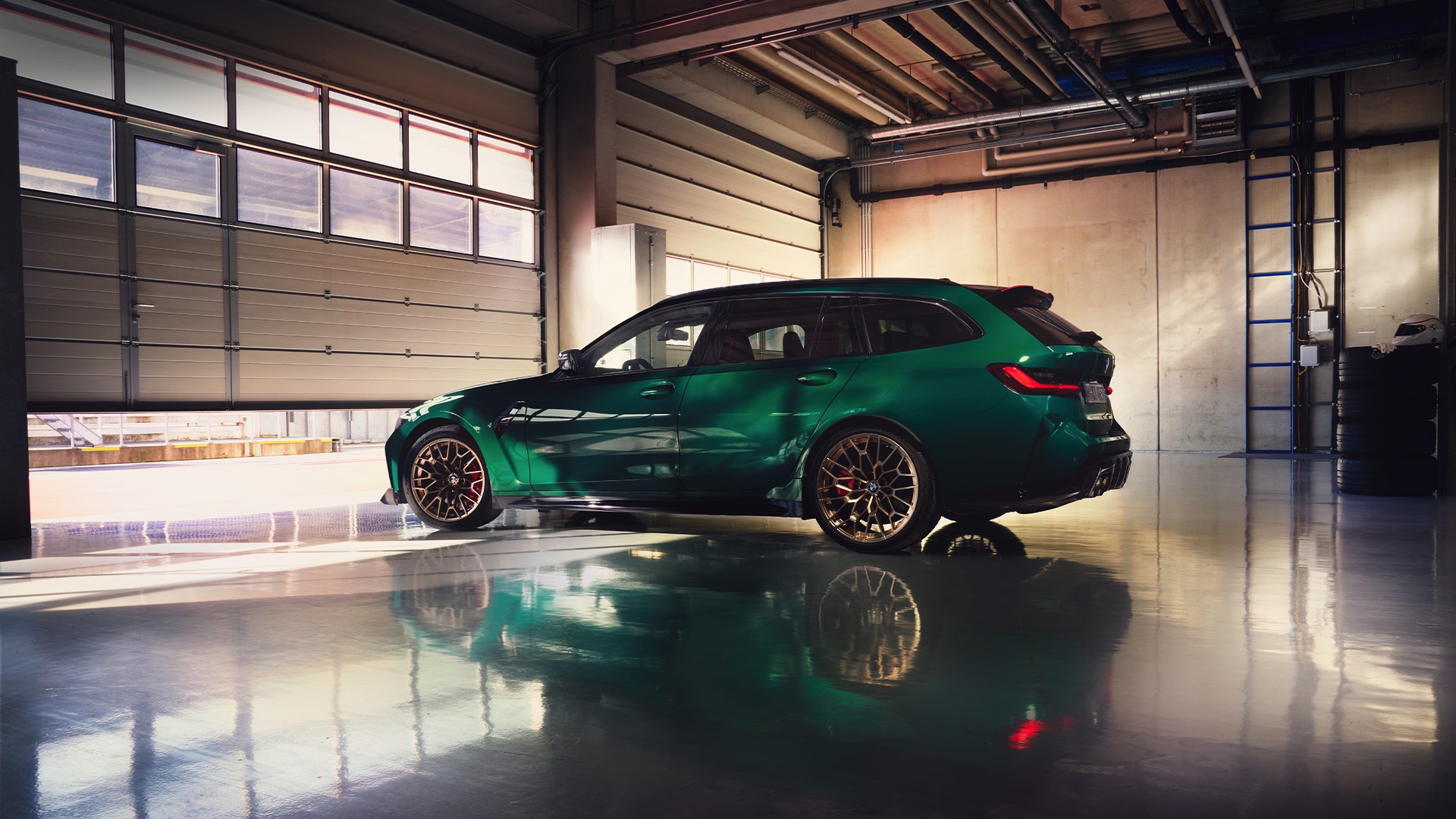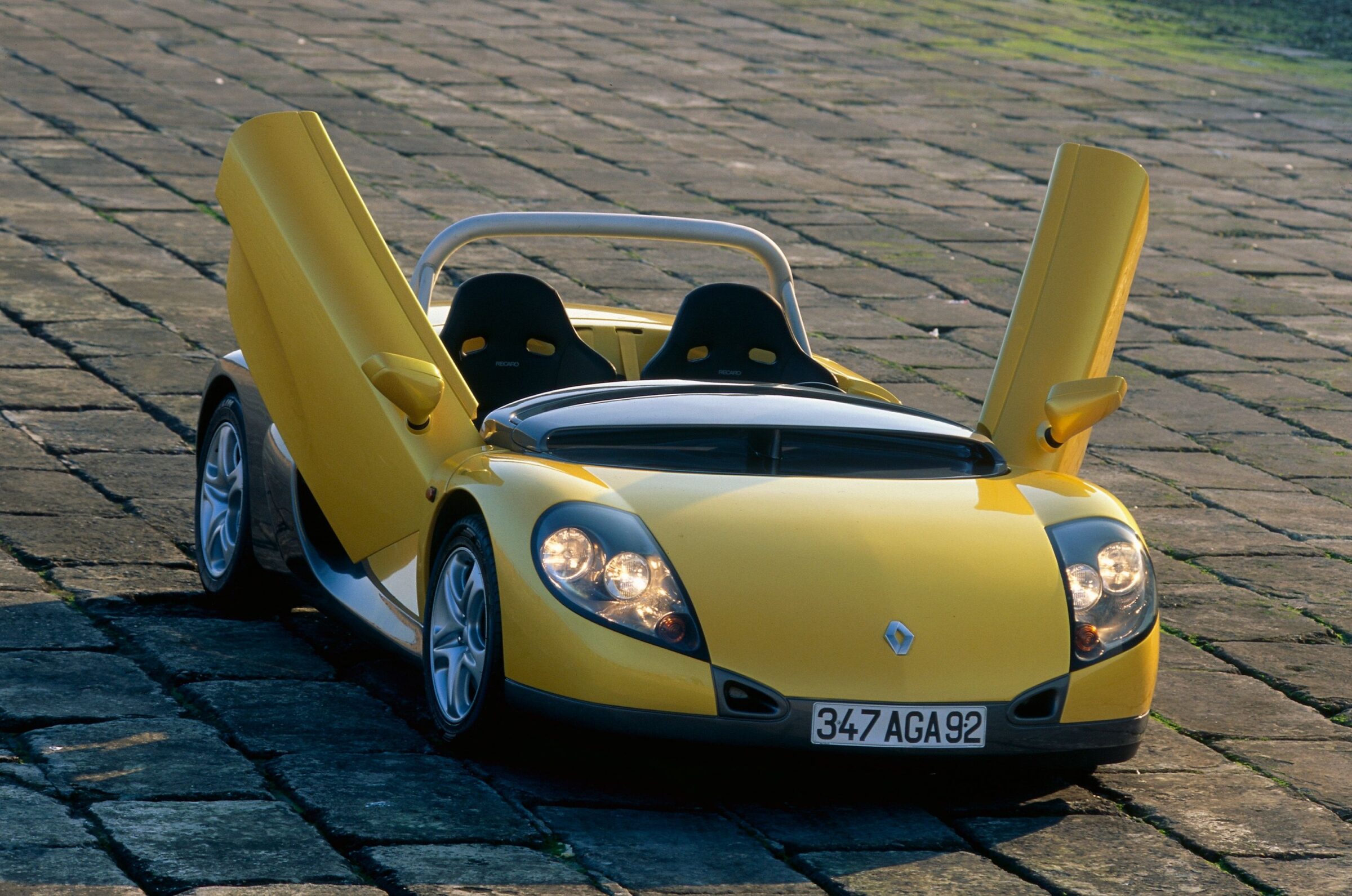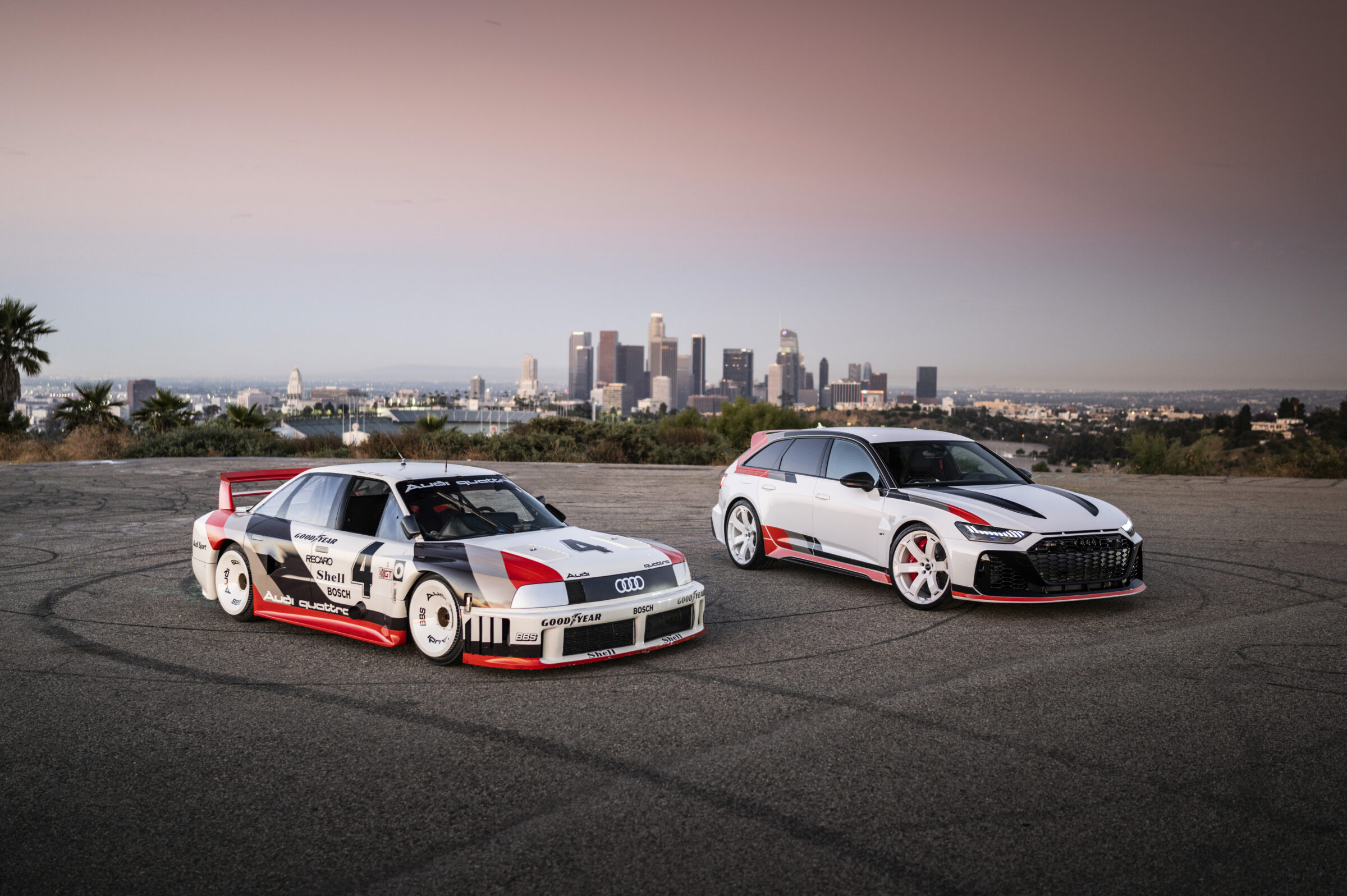Peugeot 104
Many manufacturers established a good position in the automotive market with small vehicles. Especially after World War 2, such vehicles enjoyed great popularity. They could often be driven with scooter and motorcycle licenses and at the same time offered more protection from wind and weather. Due to increasing prosperity, however, micro cars soon faded into the background. It wasn’t until the early 1970s that small cars again became more interesting on a broad scale. Again, the reason was simple: novice driverse were looking for inexpensive entry-level vehicles, and some families were looking for a second car that was as practical as possible. Austin had already had the Mini in its range for some time, Renault had been offering the 4 since 1961, but today’s big names such as the Volkswagen Polo or the Opel Corsa weren’t to be found – nor were they really expected at the time. Customers were accordingly surprised when Peugeot presented the new 104 in September 1972.
Two body variants available
This small car was angular, with many smooth surfaces and a characteristic indentation along the beltline. The design came from Paolo Martin. At the front, it wore the Peugeot family face of the time, which could also be found in a similar form on the 304 and 504. However, this made the little 104 seem almost arbitrary – or did it stick in your memory? At best, if you have owned one of the approximately 1.6 million units built. Originally, the French car was only available as a four-door hatchback with a small trunk lid. A year after its market launch, the three-door 104 Coupé variant followed, shortened by about 20 centimeters. It later became the 104 Z. After an extensive facelift in July 1976, the longer variant with the large trunk lid of the Z could also be ordered at extra cost. In contrast, a four-door sedan, an estate and a commercial vehicle variant as a van and pickup of the 104 were only produced as prototypes.
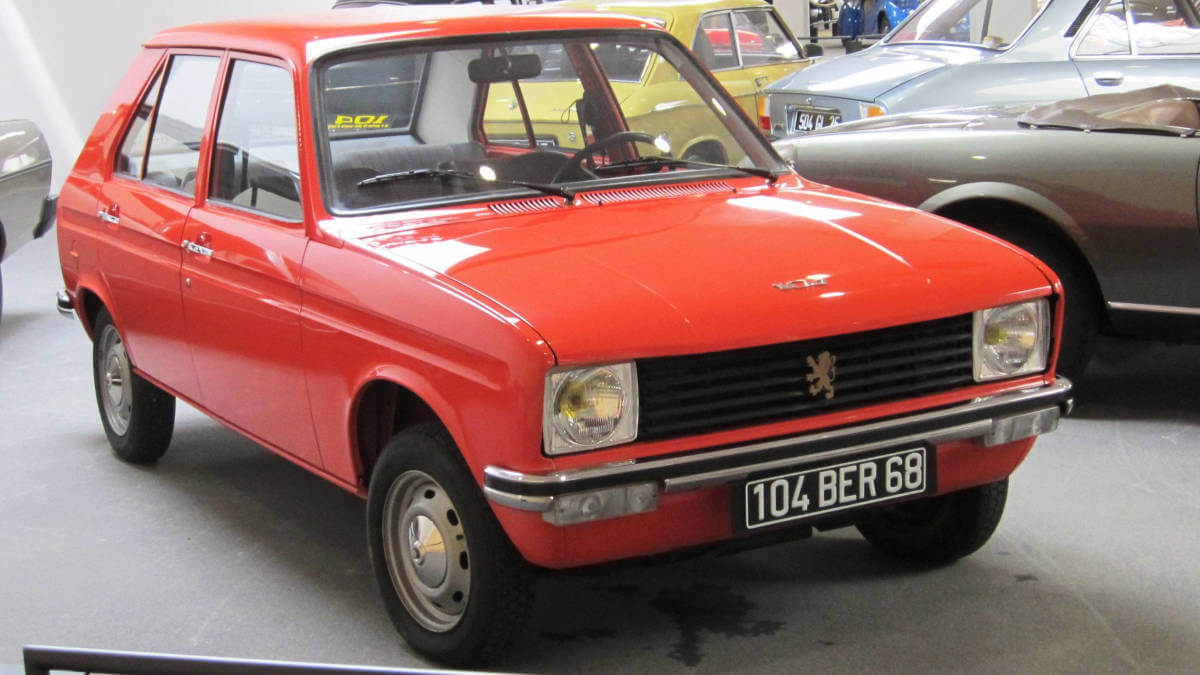

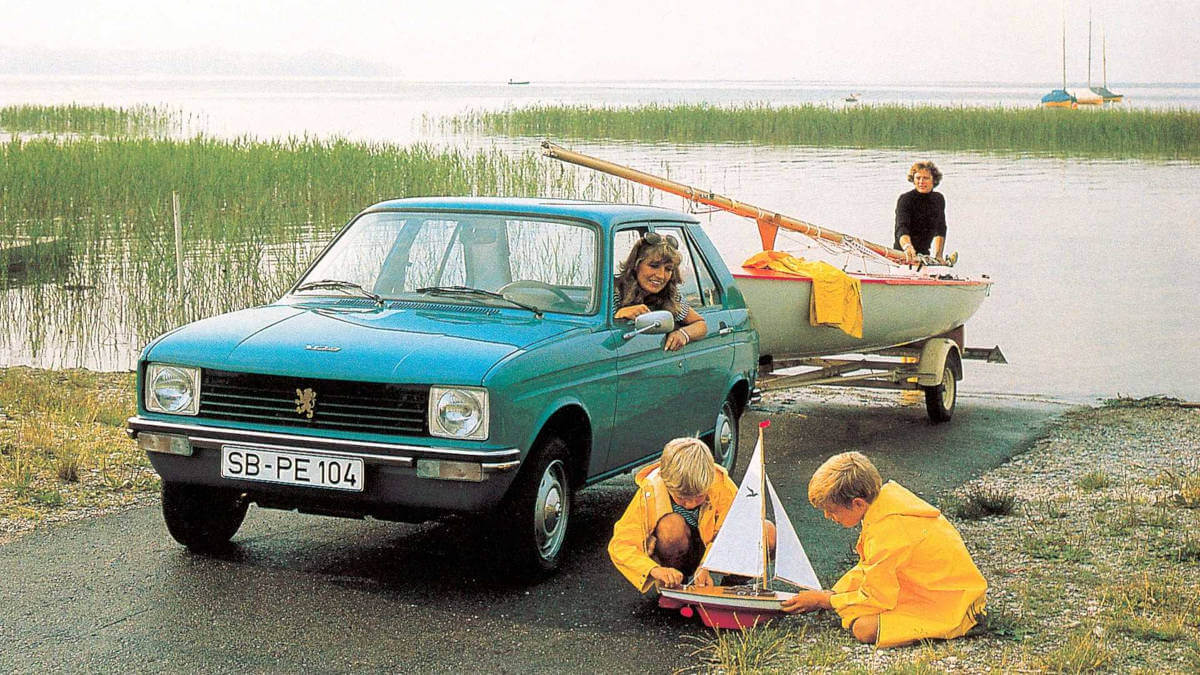





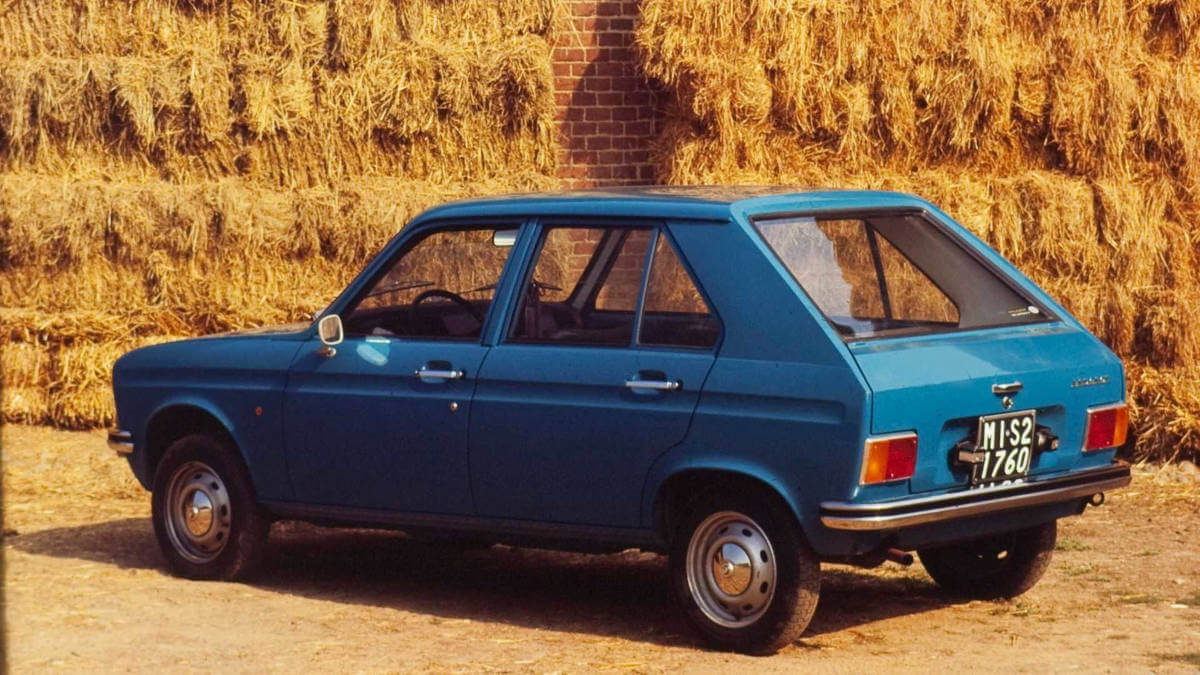



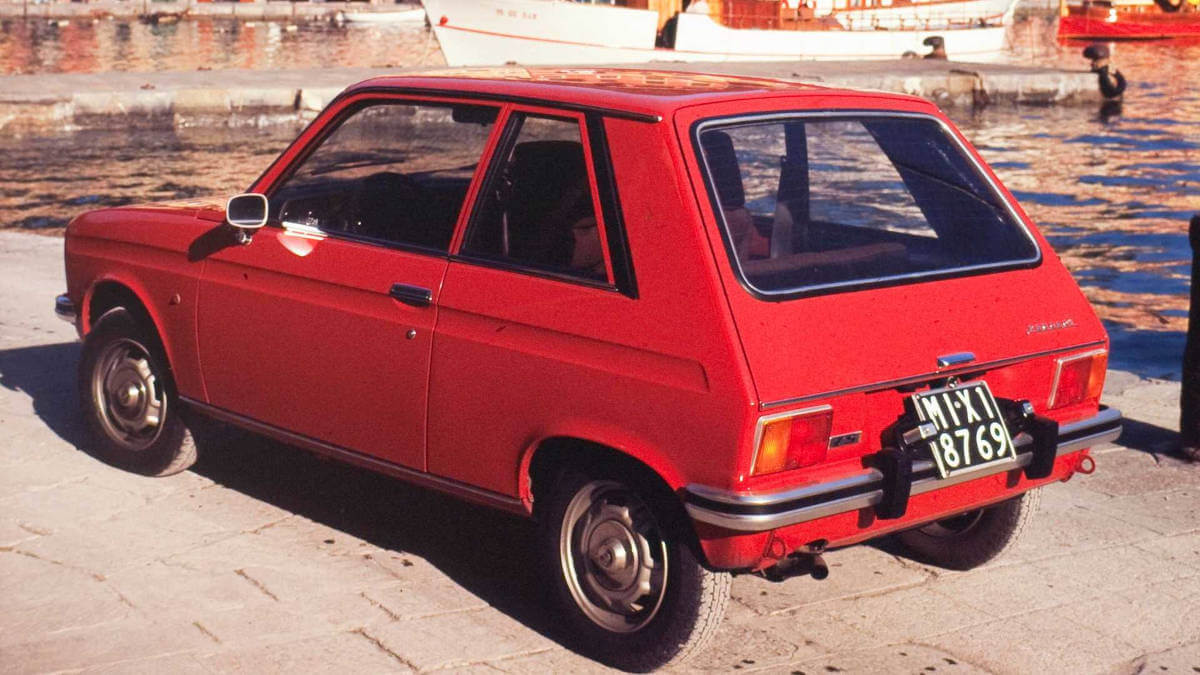





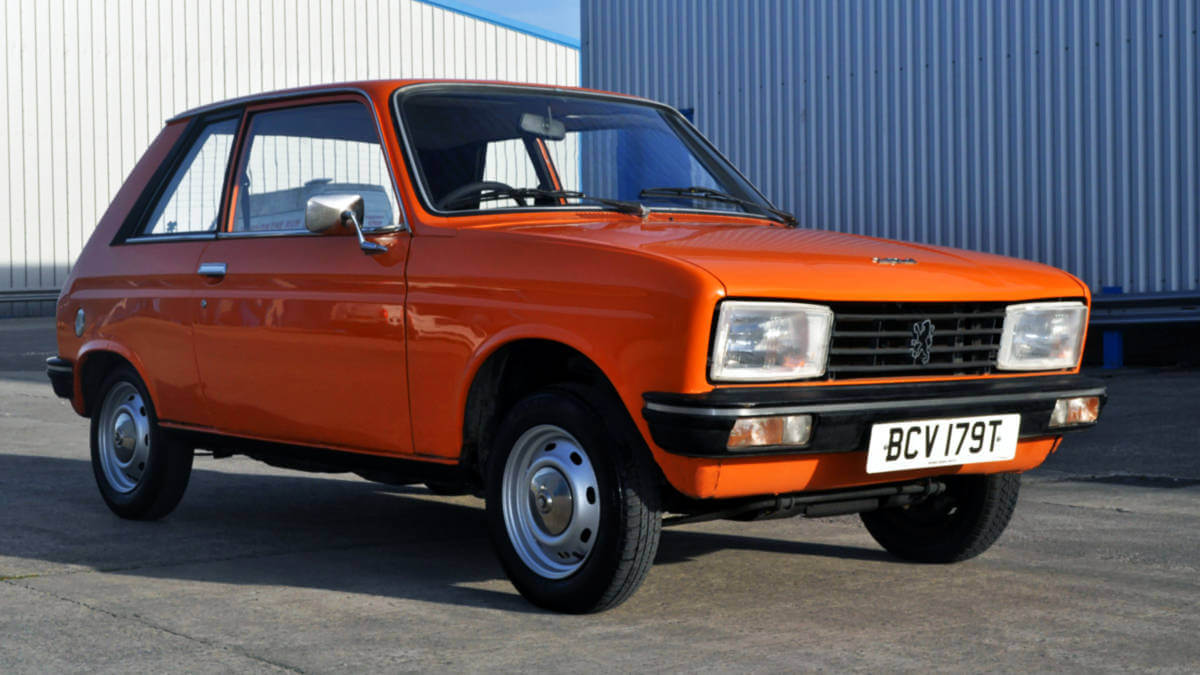





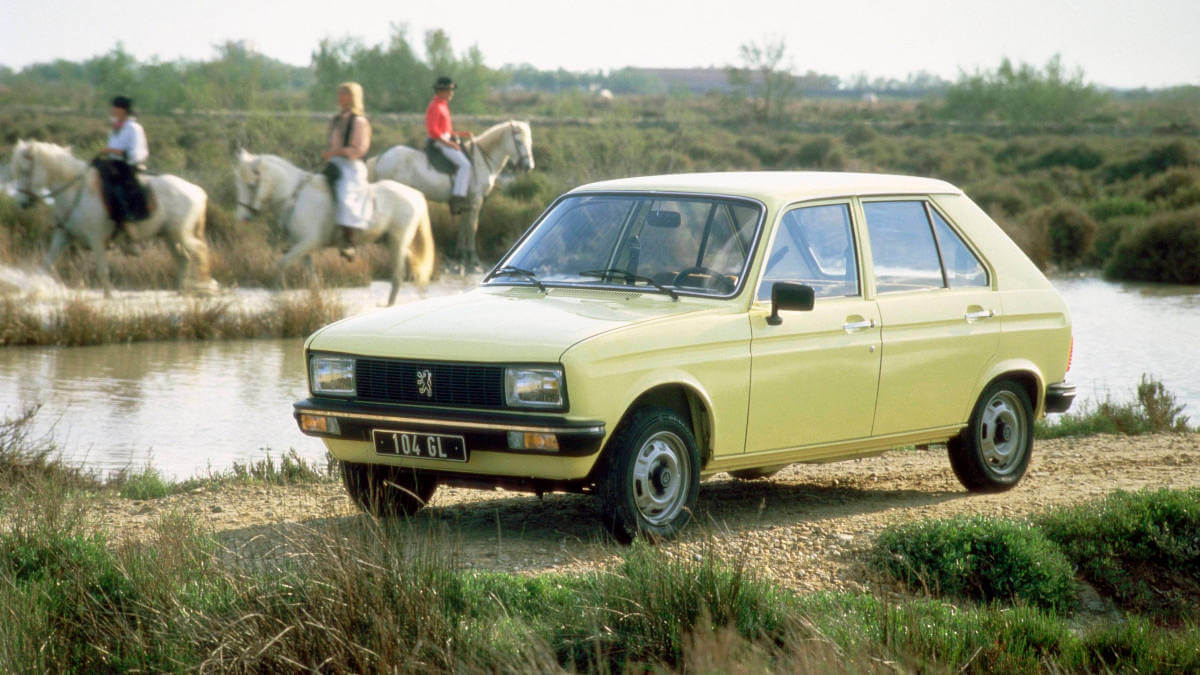

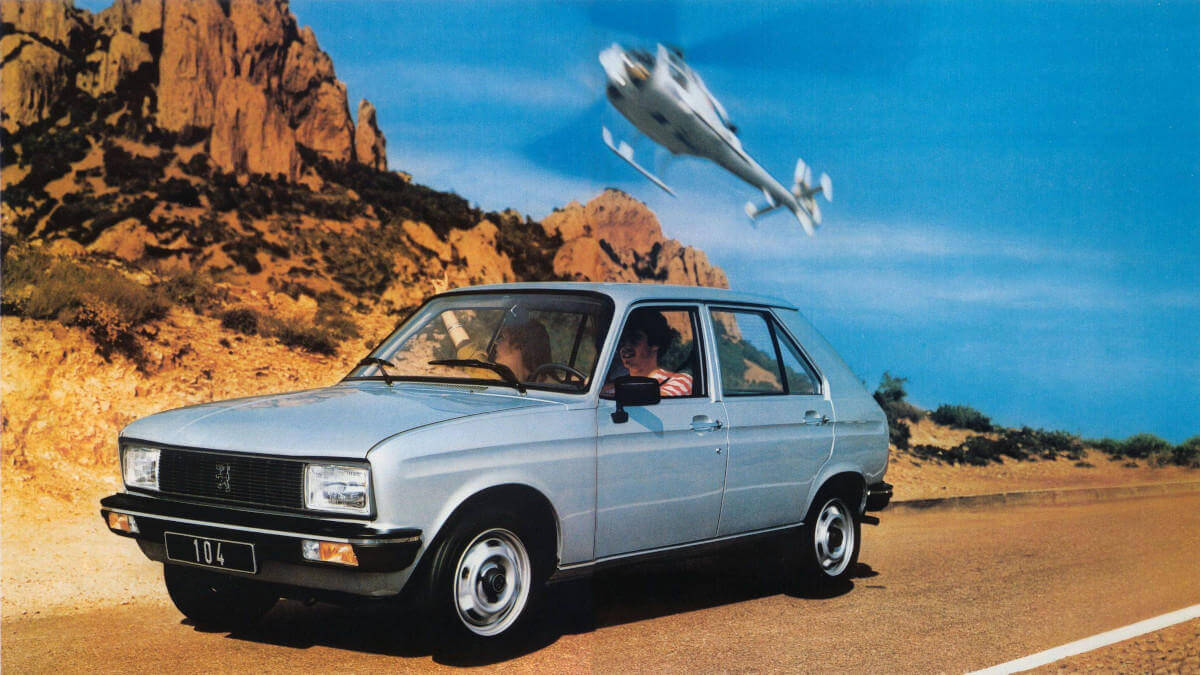

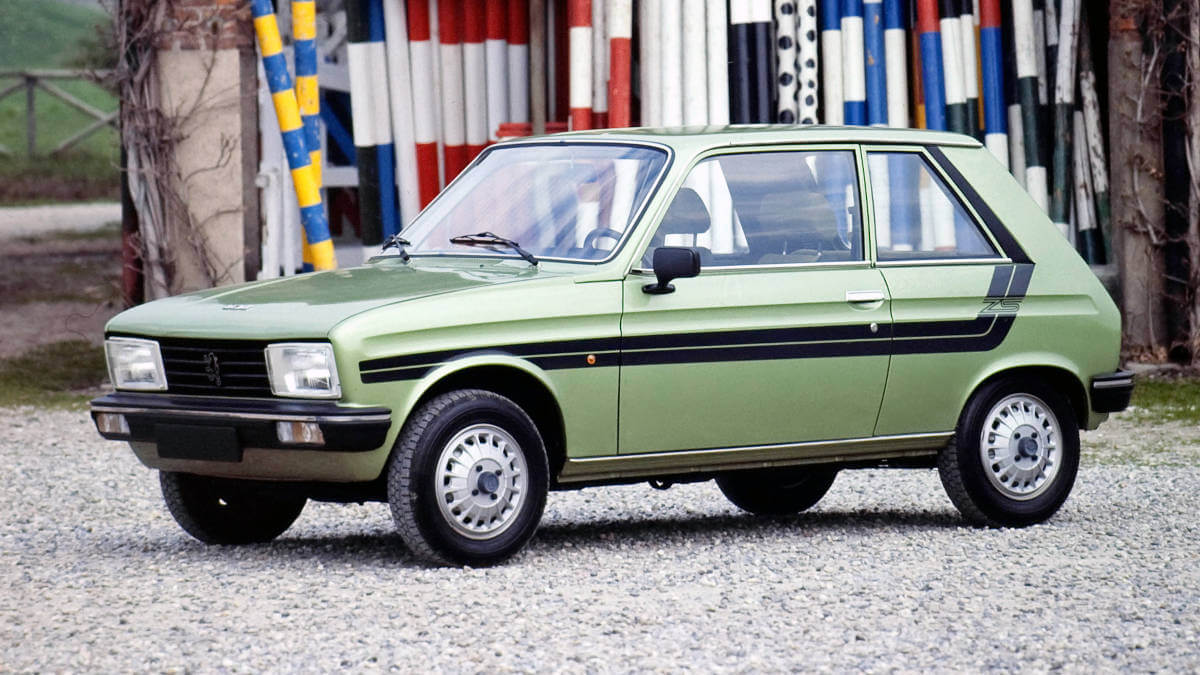

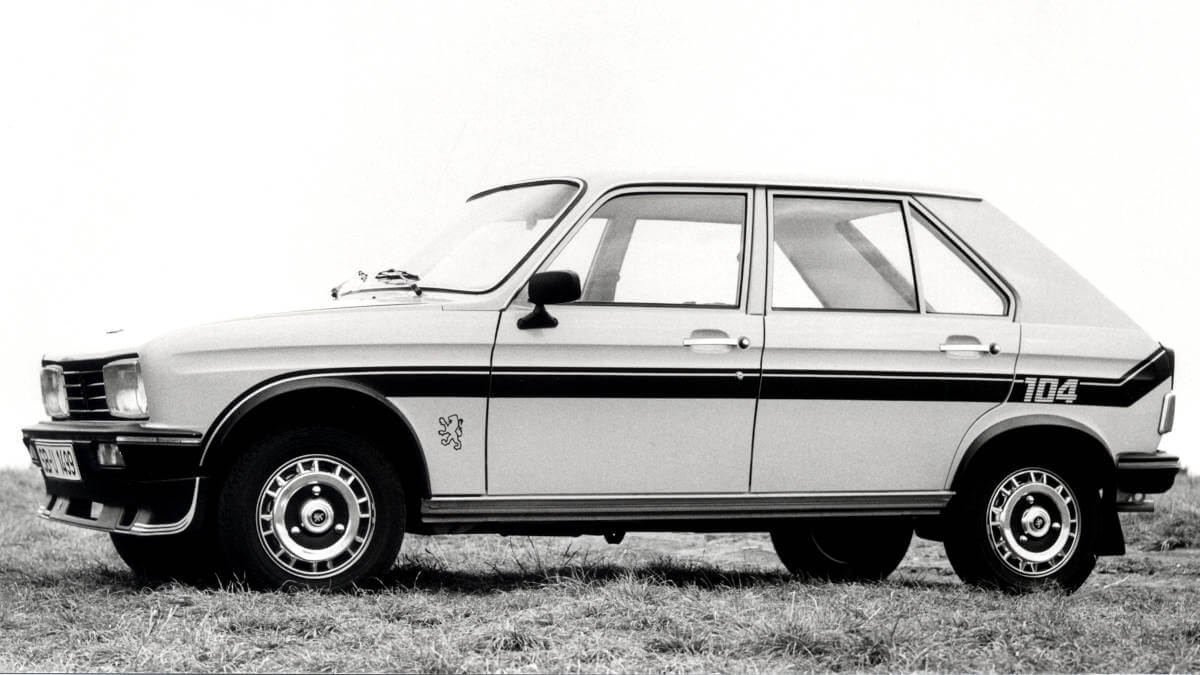

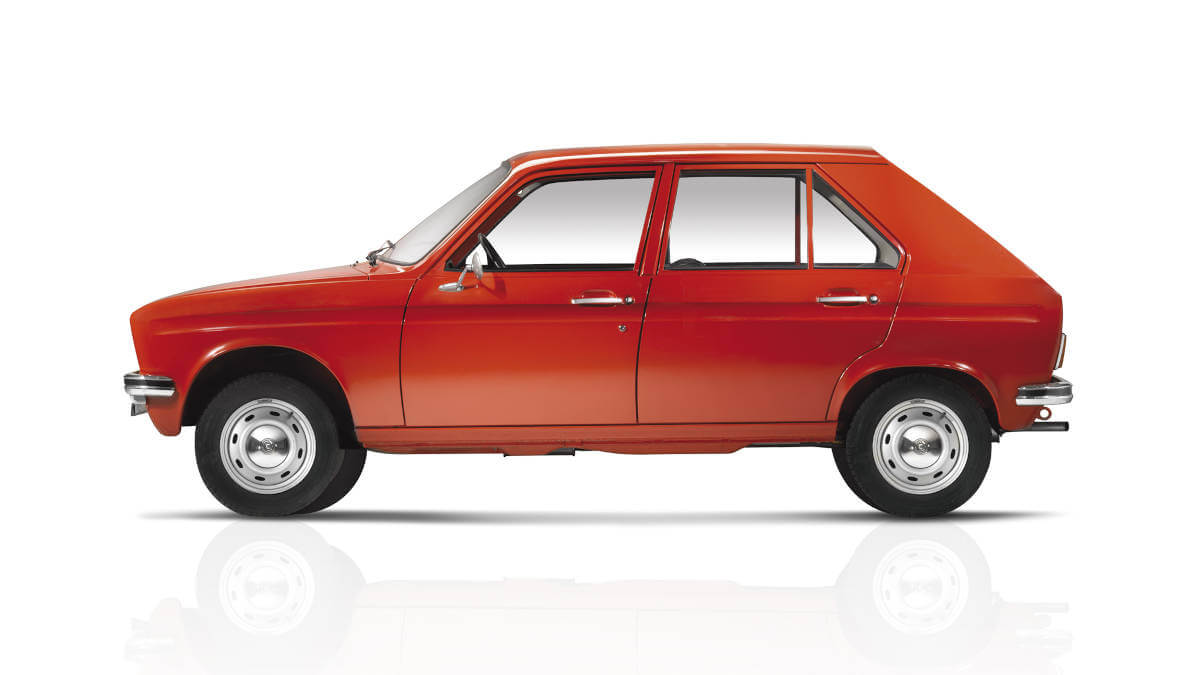



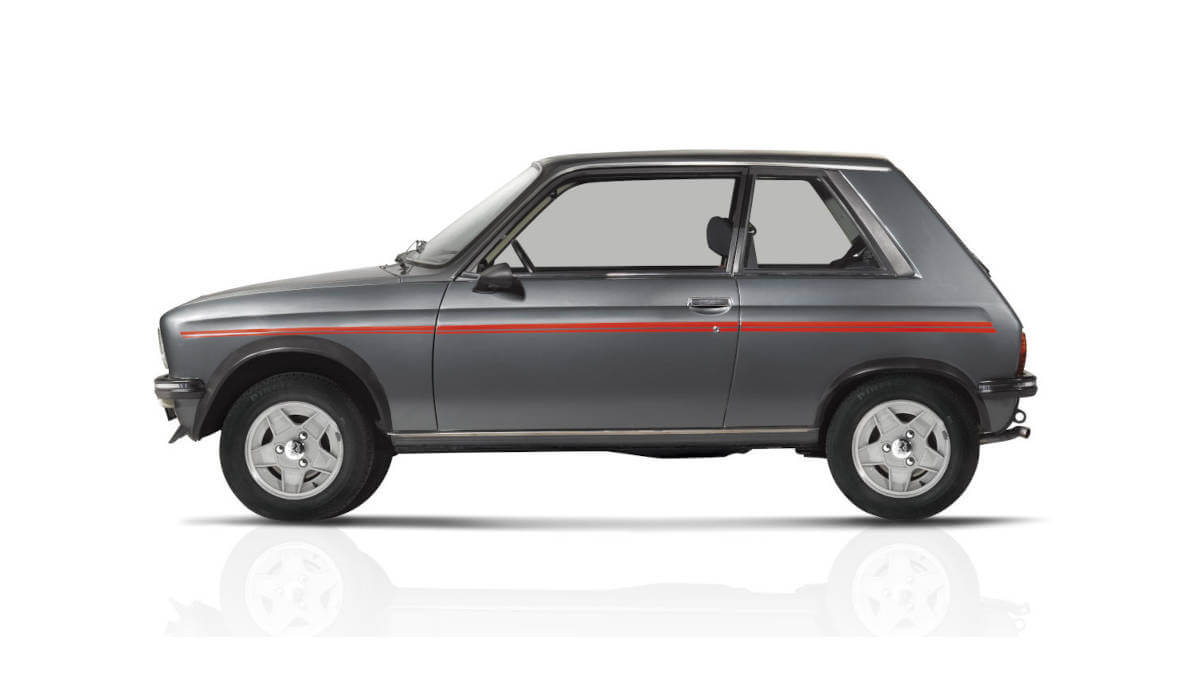

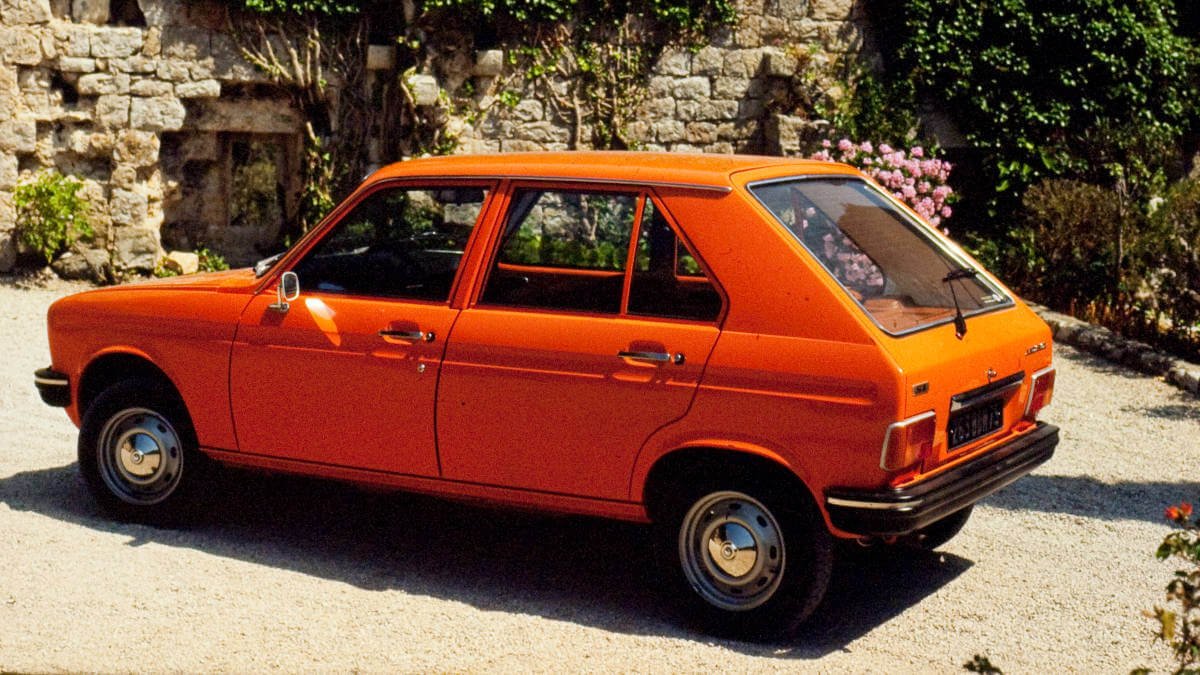

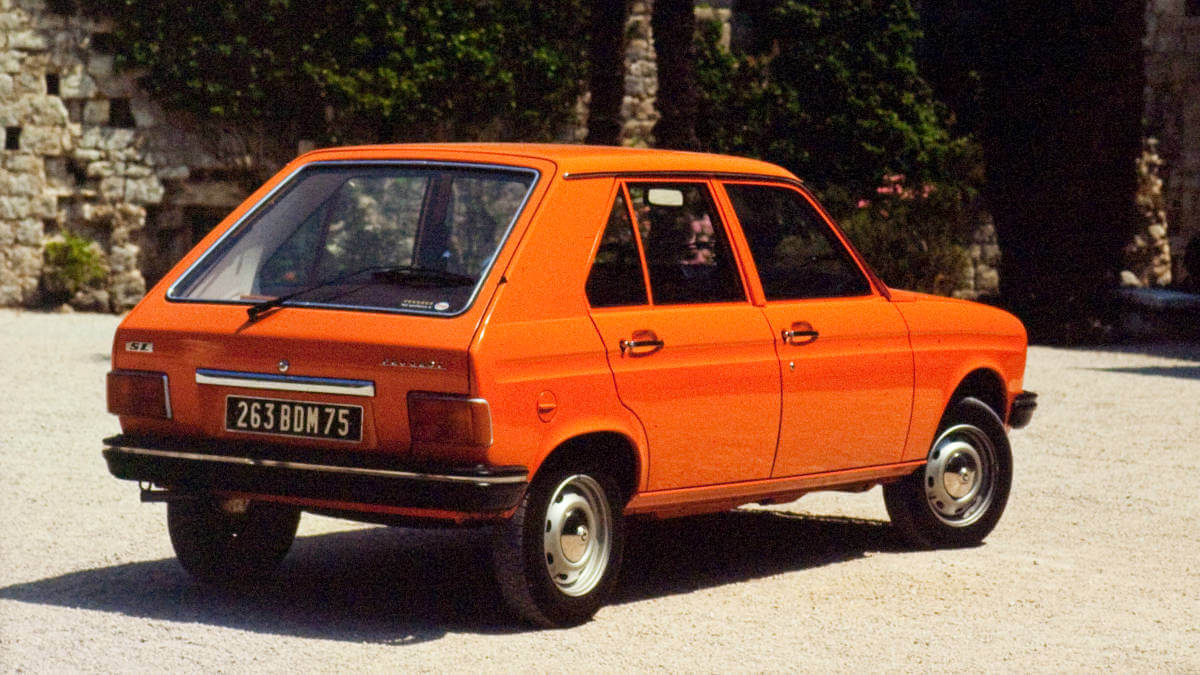

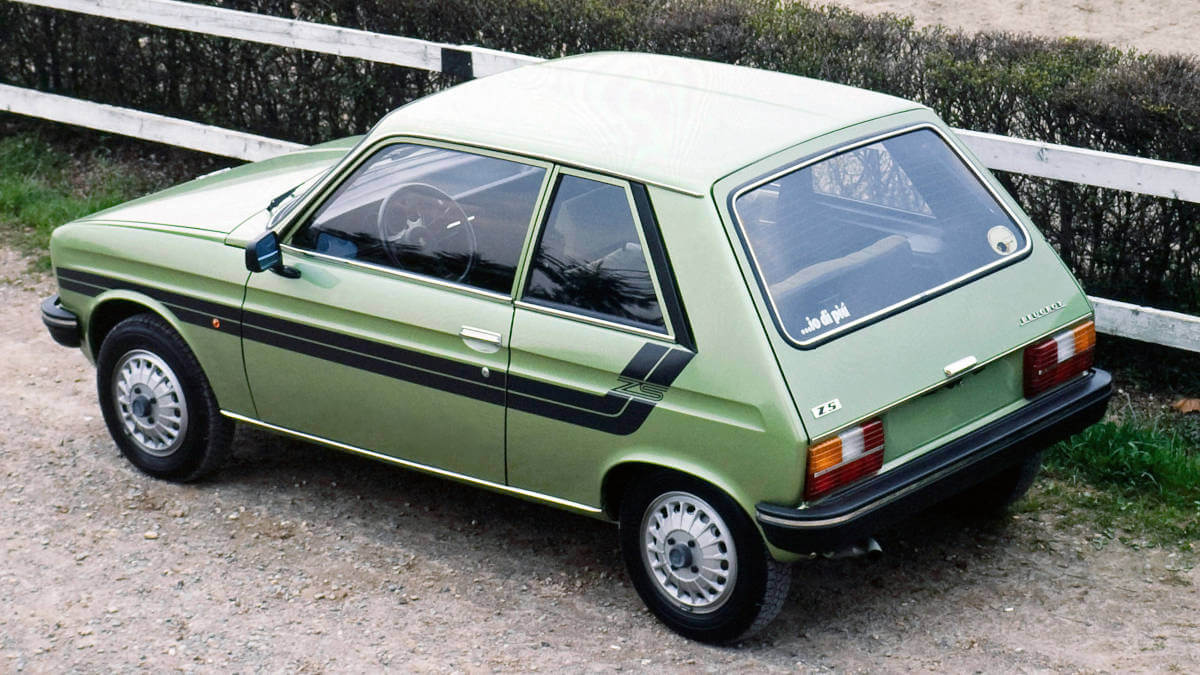







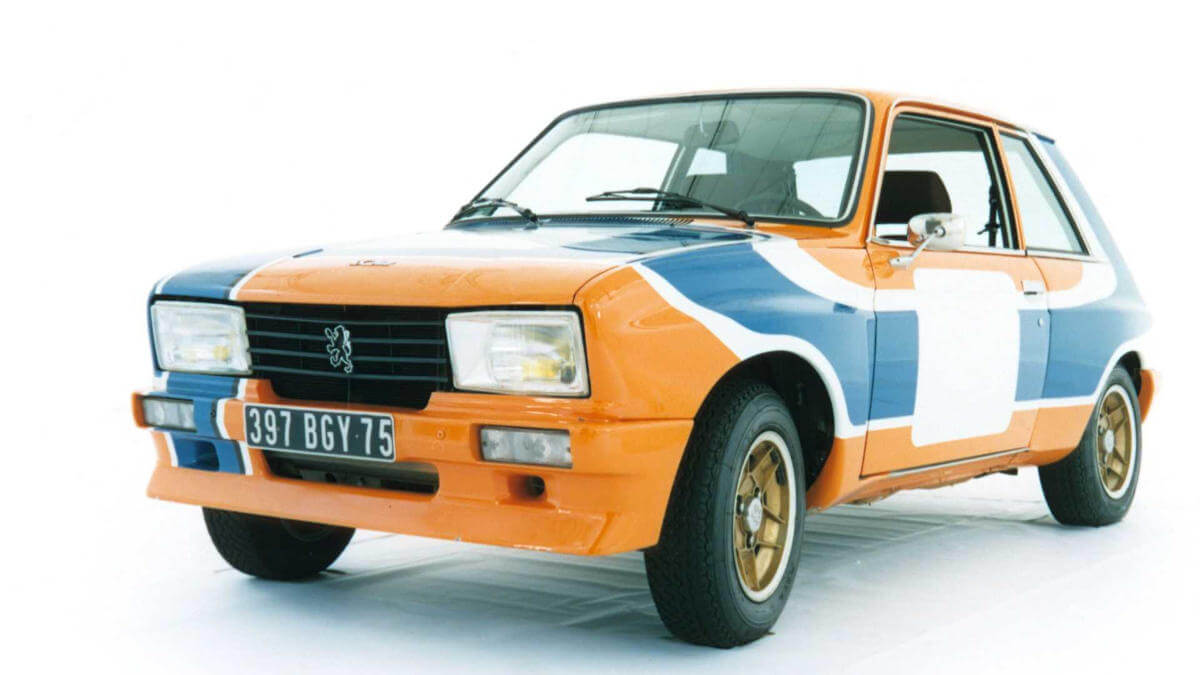



Four-cylinder engine made of aluminium
Under the hood of the 104 was a newly developed four-cylinder engine. This was fitted with an aluminium block and a cylinder head with valves hanging in V-shape. These were driven by an overhead, chain-driven camshaft. Power ratings were 45 hp (954 cc) and 53 hp (1,124 cc). The ZS had 66 hp, the ZL 57 hp. For the French market, Peugeot added a 1.3-liter engine with 60, 72 and 79 hp. The ZS was gradually updated to 80 hp. In 1979, there was the ZS 2 with 93 hp, limited to 1,000 units. There was no diesel version, although Peugeot was already known for this technology. The transmission was installed below the engine. They shared one oil circuit. At the same time, this design made for a large overall height. To reduce this, the transversely mounted engine was tilted by 72 degrees. This allowed the spare wheel to be additionally accommodated there, which meant more trunk volume.
Sister models
Two sister models were developed within the PSA Group on the basis of this small car. Citroën used the bodyshell of the three-door 104 Z for the LN. In contrast to the Peugeot, two-cylinder boxer engines from the Dyane provided the propulsion. Visual differences were limited to round headlights and a single-spoke steering wheel. From the end of 1978, the model was also available as an LNA with Peugeot’s small four-cylinder engines. 1982 saw the debut of the Talbot Samba, which also adopted the three-door body of the 104. The Samba was available exclusively with four-cylinder engines. It was also offered in a convertible version designed by Pininfarina. Both versions remained on offer until the Talbot brand was discontinued in spring 1986. Peugeot kept the 104 in their portfolio in France until the summer of 1988, while it was withdrawn in almost all other markets in 1984.
Images: Peugeot


